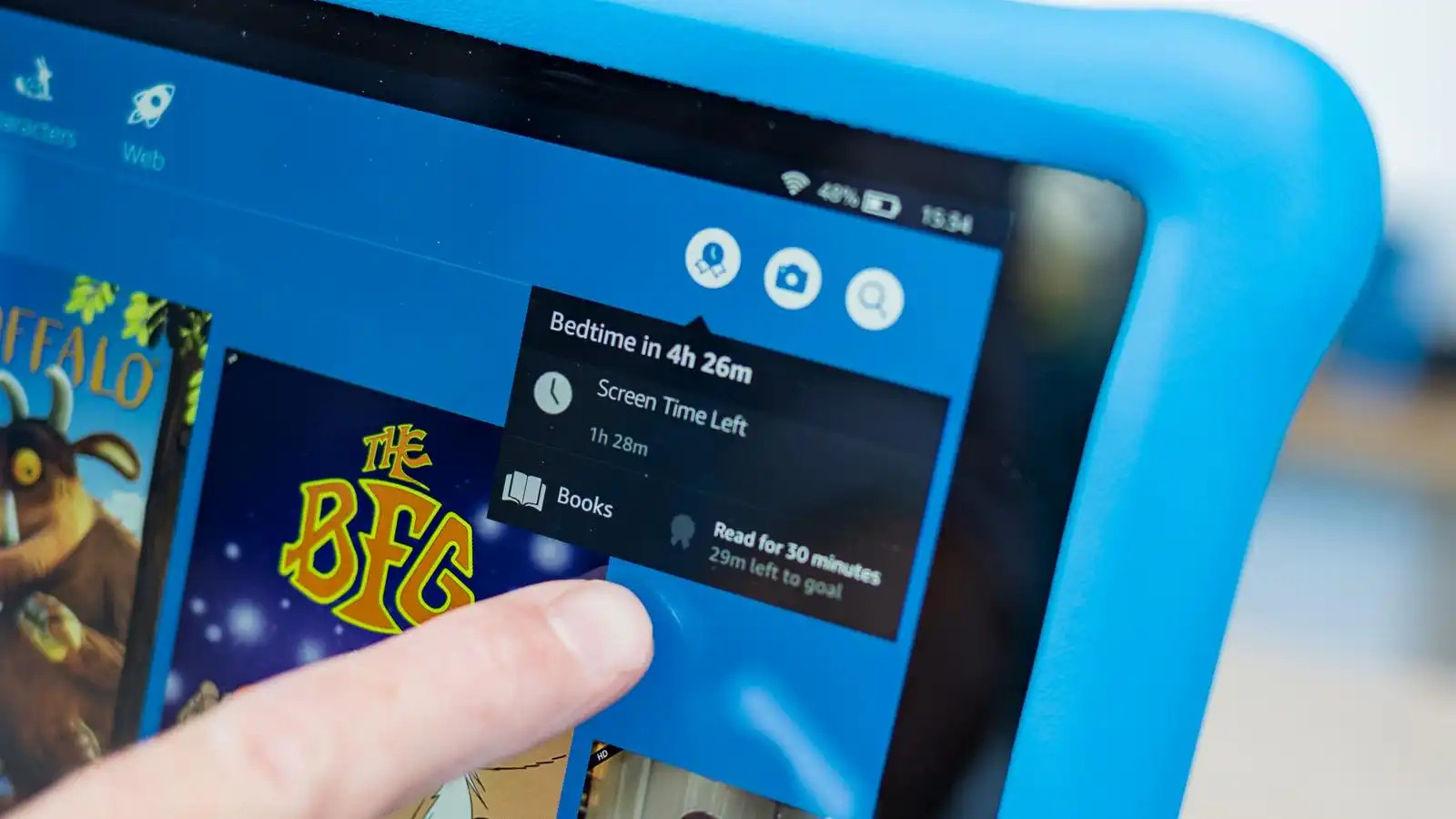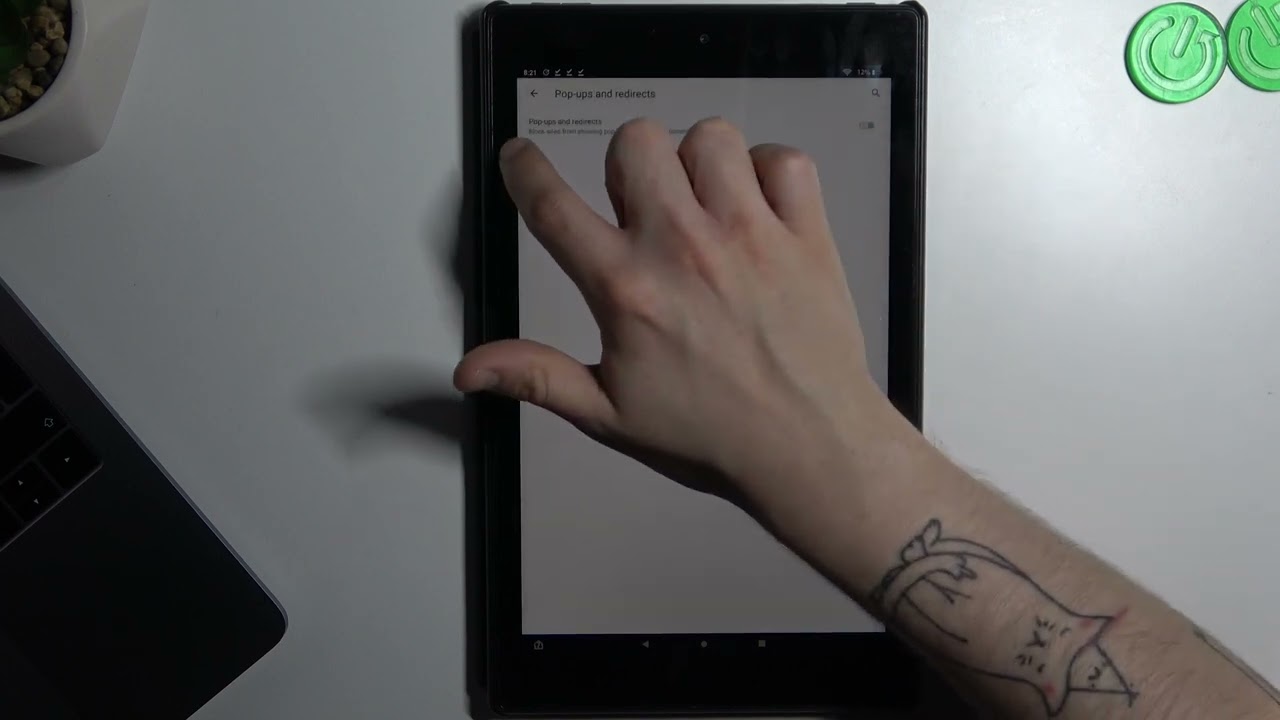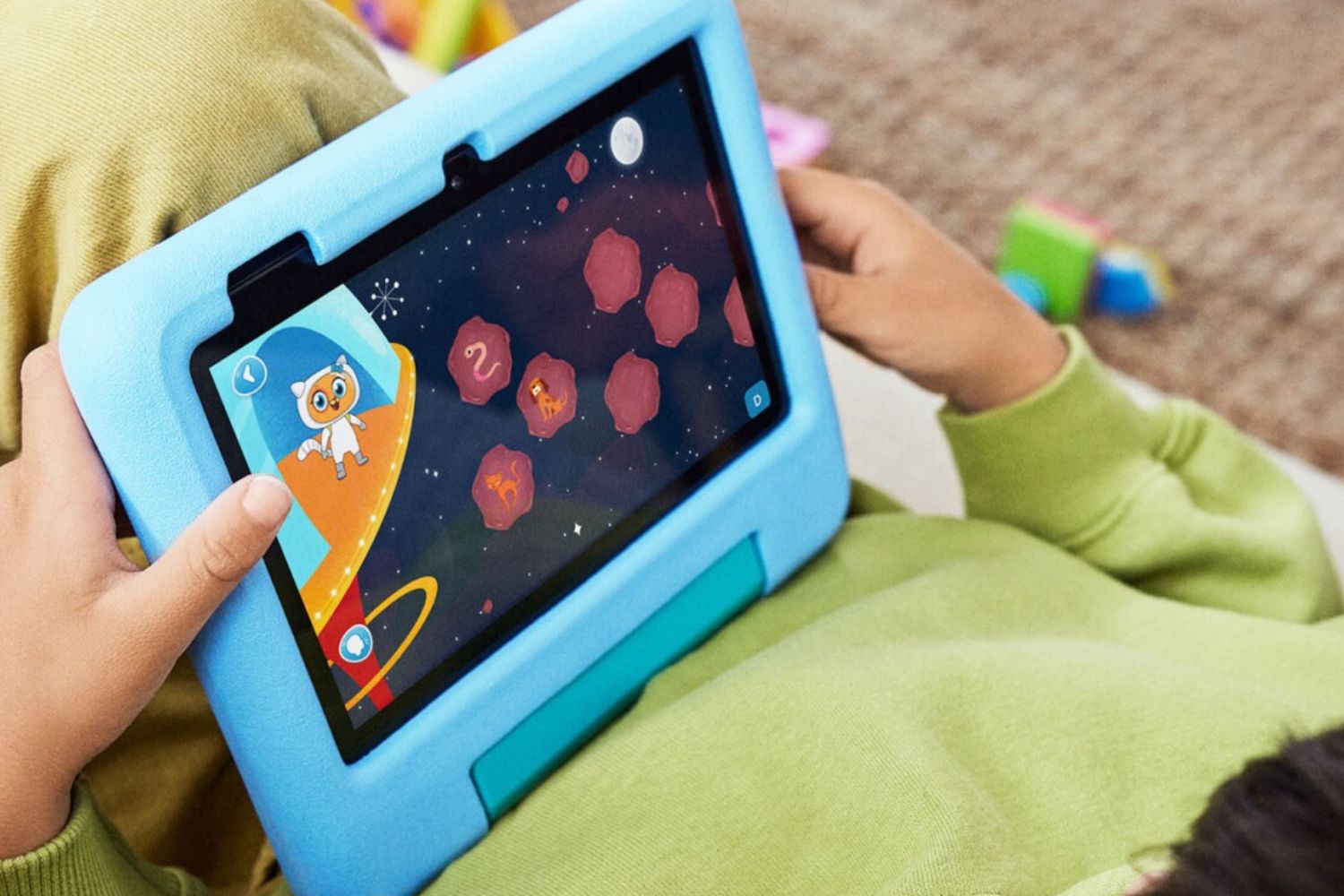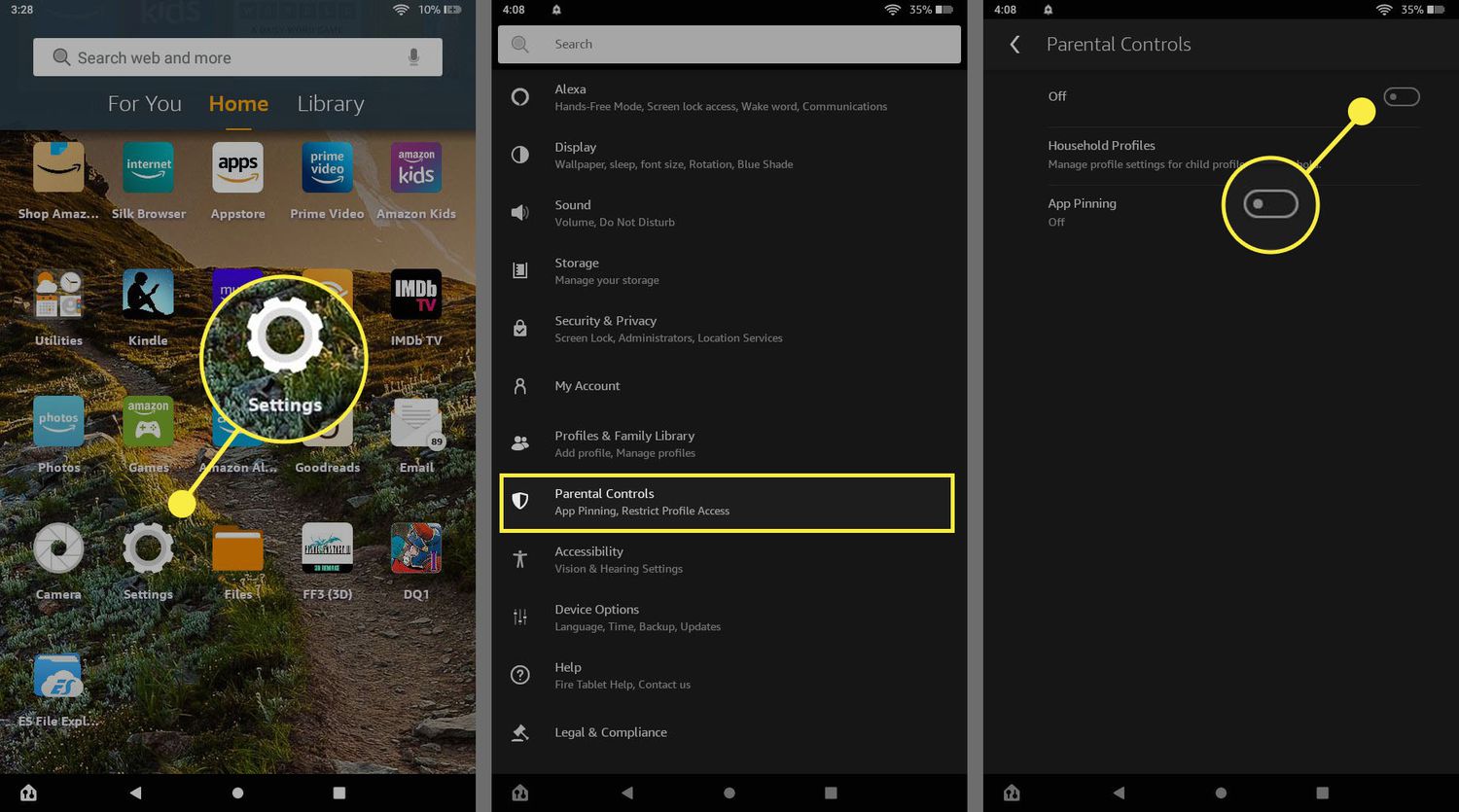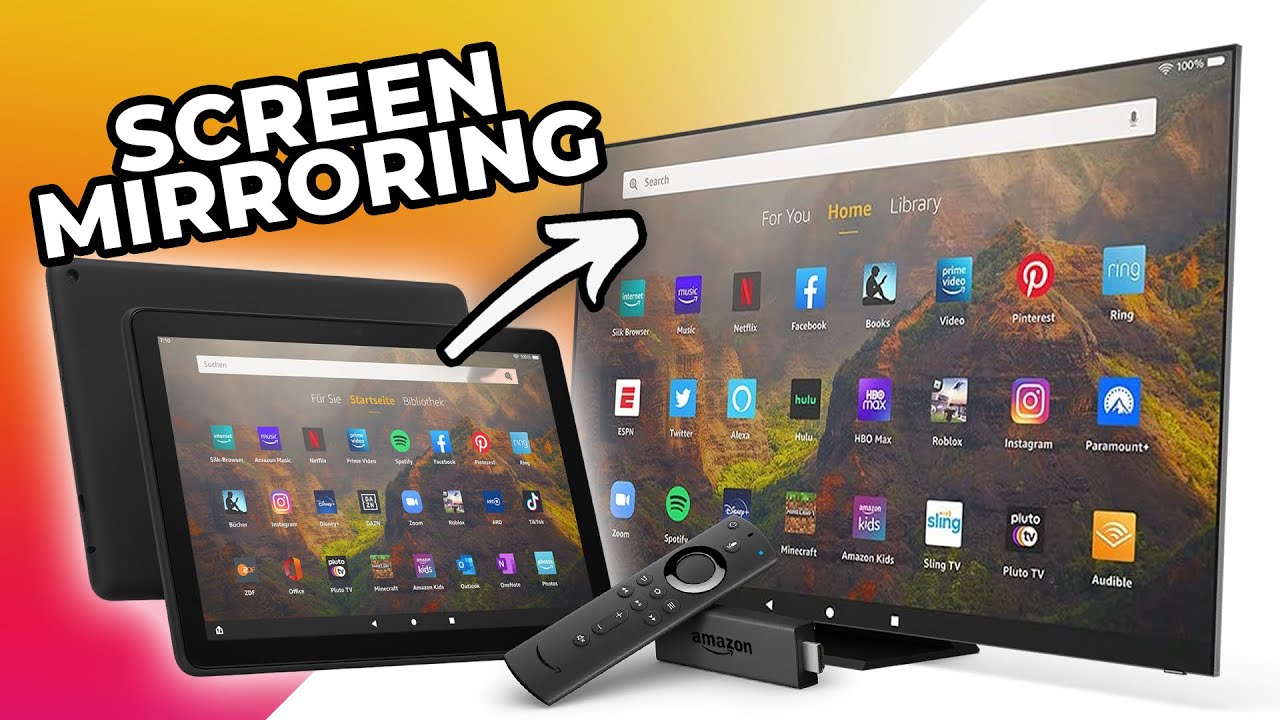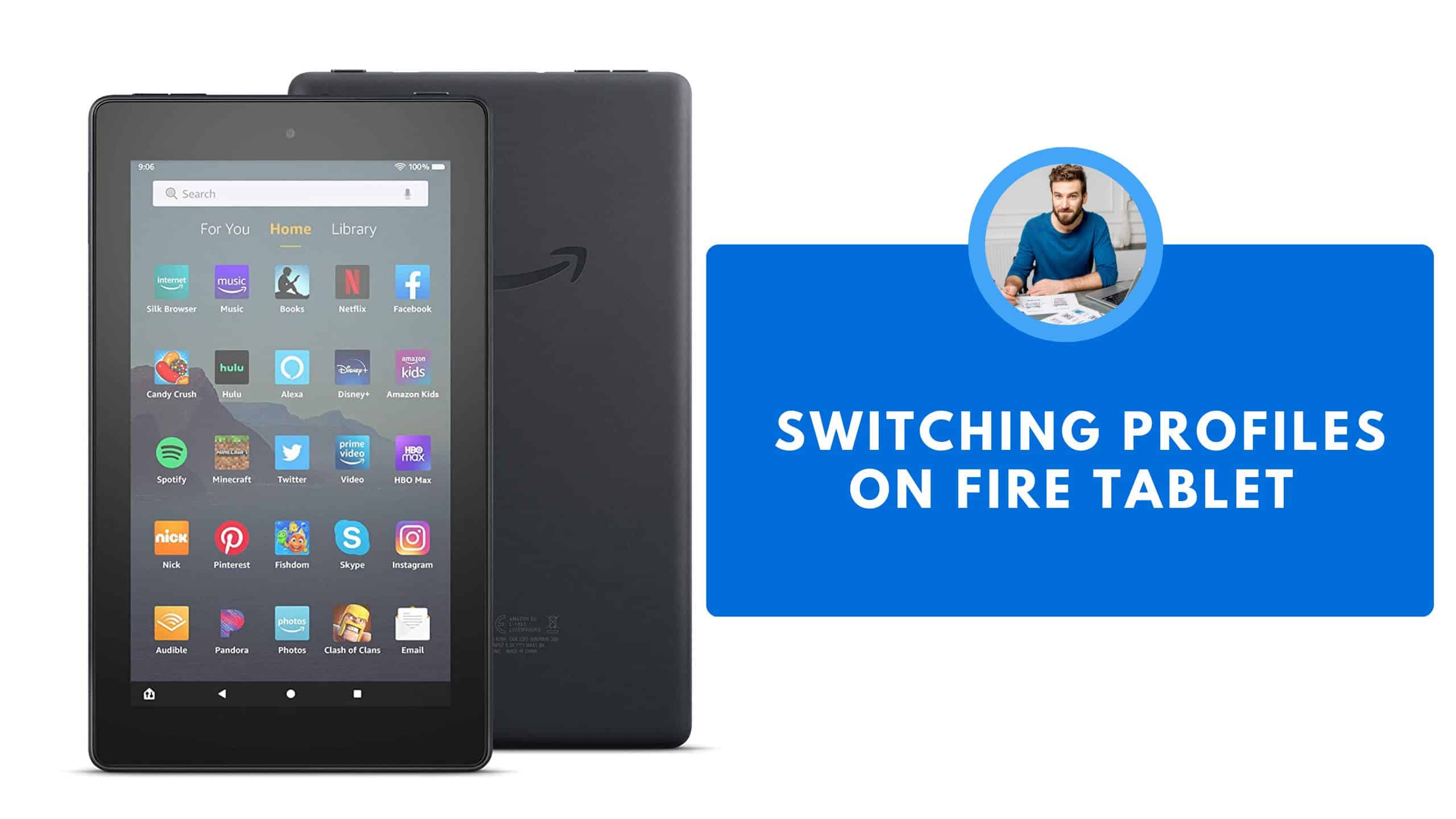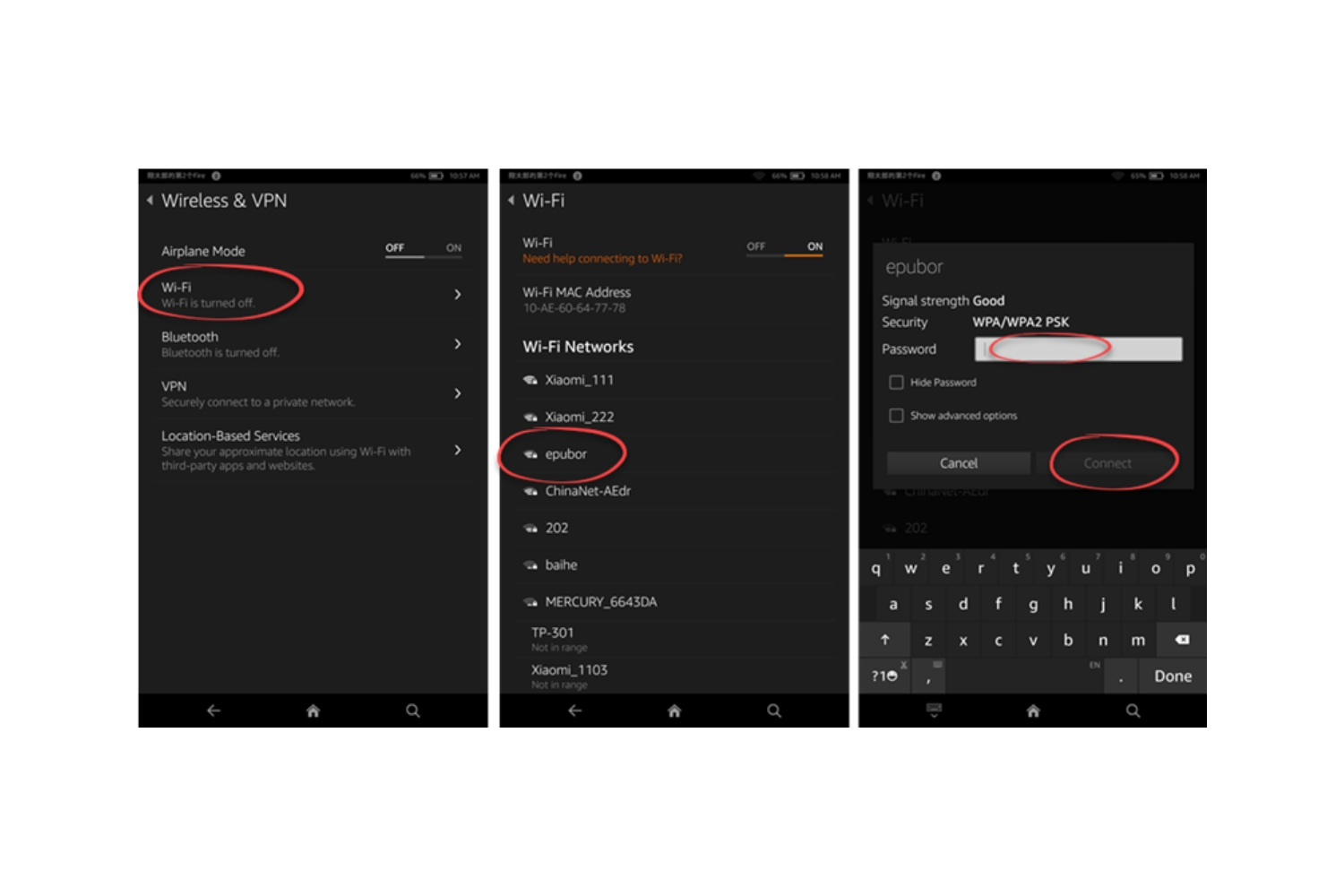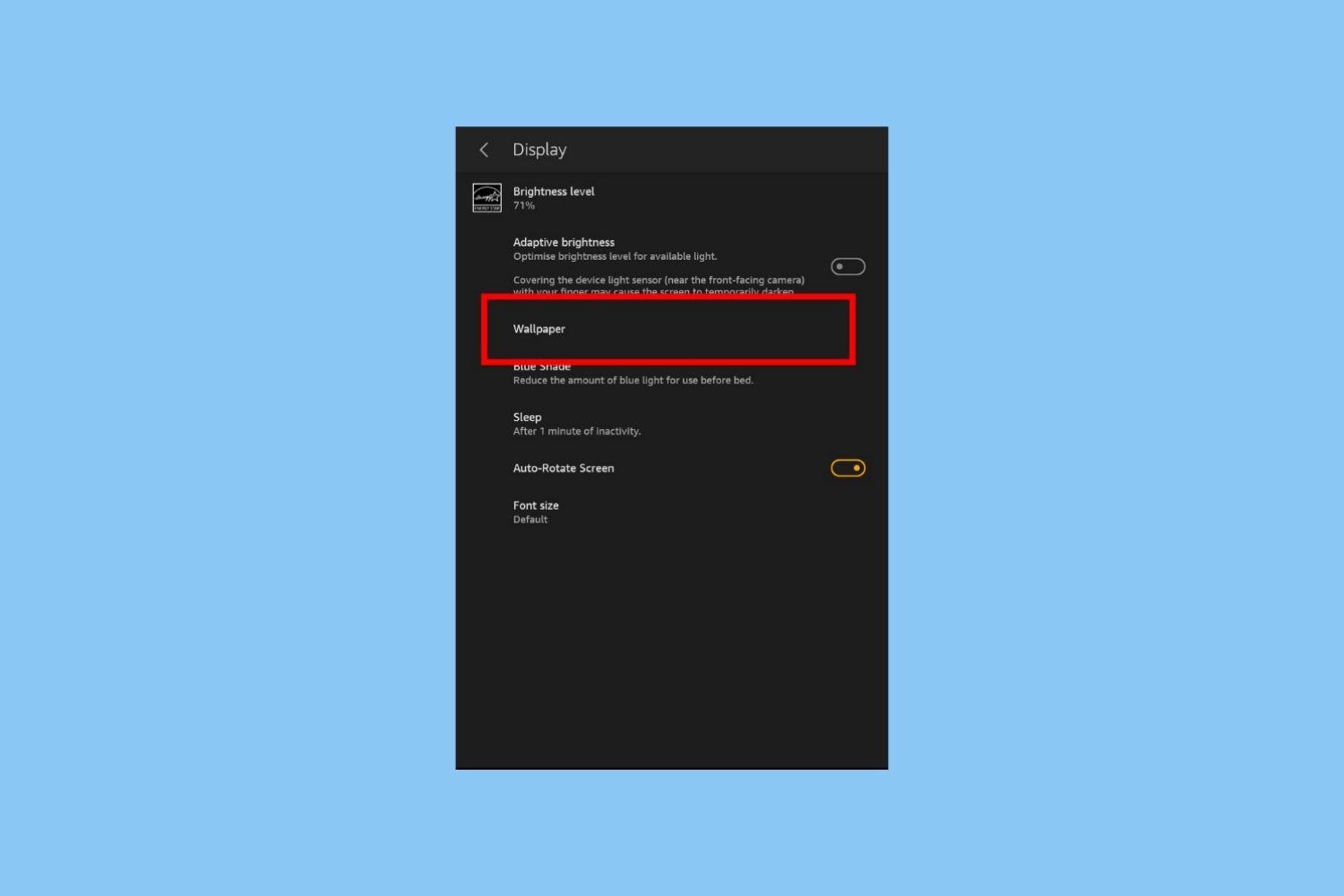How To Set Screen Time On Amazon Fire Tablet
Introduction
Screen time management is essential in today’s digital age, especially when it comes to children and their devices. With the Amazon Fire Tablet, parents can easily set screen time limits and manage content access to ensure a healthy balance between technology and other activities. In this guide, we will walk you through the step-by-step process of setting up screen time on an Amazon Fire Tablet.
With the ever-increasing availability of digital media and apps, it’s crucial to establish boundaries and control the time spent on electronic devices. This not only helps in promoting healthy habits and fostering a balanced lifestyle but also ensures that children are safeguarded from inappropriate content. By utilizing the built-in parental control features of the Amazon Fire Tablet, you can have peace of mind knowing that your child is using their device responsibly and safely.
The parental control options on the Amazon Fire Tablet allow you to set screen time limits, manage app and content restrictions, and customize web browsing settings. Additionally, you can create individual profiles for each child, tailor their device usage to their specific needs, and track their usage statistics to gain insights into their digital habits.
In the following sections, we will guide you through the process of accessing the parental control settings, setting up profiles, enabling screen time limits, customizing usage goals, managing app and content restrictions, adjusting web browsing settings, and utilizing the Amazon FreeTime app for enhanced control and monitoring. Let’s get started and ensure a safe and balanced digital experience for your child on the Amazon Fire Tablet.
Accessing the Settings Menu
To begin setting up screen time on your Amazon Fire Tablet, you need to access the Settings menu. Here’s how you can do it:
- Unlock your Amazon Fire Tablet by entering your device passcode or using the fingerprint scanner if available.
- Swipe down from the top of the screen to reveal the notification bar.
- Tap on the “Settings” icon, which resembles a gear or cogwheel.
After tapping the Settings icon, you will be redirected to the device’s settings menu, where you can customize various options and features. In the following sections, we will explore how to navigate through the settings menu to access the parental control options specifically.
It’s important to note that the steps may slightly vary depending on the specific model and version of your Amazon Fire Tablet. However, the general process remains relatively consistent across devices.
By accessing the Settings menu, you have taken the first step towards managing screen time on your child’s Amazon Fire Tablet. Now, let’s move on to the next section and learn how to navigate to the parental controls section.
Navigating to the Parental Controls Section
Once you have accessed the Settings menu on your Amazon Fire Tablet, it’s time to navigate to the parental controls section. Follow these steps to find the parental controls options:
- Scroll down the Settings menu until you find the “Parental Controls” option. It is usually located towards the bottom of the menu.
- Tap on the “Parental Controls” option to enter the parental controls settings.
- If prompted, enter your Amazon account password to proceed.
By selecting the “Parental Controls” option, you will be directed to a screen where you can customize and manage various settings related to your child’s device usage.
The parental controls section provides you with comprehensive control over screen time limits, app and content restrictions, web browsing settings, and more. It allows you to create individual profiles for each child, set up usage goals, and monitor their activity. This ensures that your child has a safe and healthy digital experience while using the Amazon Fire Tablet.
Navigating to the parental controls section on your Amazon Fire Tablet is a crucial step in managing screen time effectively. In the next section, we will explore how to set up a profile for your child, enabling you to personalize their device usage and implement appropriate restrictions. Let’s dive in.
Setting Up a Profile for Your Child
Creating individual profiles for your children on the Amazon Fire Tablet allows you to tailor their device usage according to their age and preferences. These profiles provide a personalized experience and allow you to set specific restrictions and screen time limits. To set up a profile for your child, follow these steps:
- Go to the Parental Controls section in the Settings menu.
- Tap on the “Add a Child” or “Add Profile” option.
- Choose whether you want to create a child profile or teen profile, depending on the age of your child.
- Enter your child’s name and age.
- Set a profile icon or upload a photo to personalize the profile.
- Customize the settings for the profile, including content access, screen time limits, and educational goals if desired.
- Tap “Save” to create the profile for your child.
Upon creating a profile for your child, you can manage their content access and screen time limits individually. It’s important to consider age-appropriate content and adjust these settings accordingly. For younger children, you may want to enable content filtering and restrict access to certain apps or websites. For older children, you can gradually increase their independence and customize their screen time limits and restrictions.
By setting up a profile for your child, you are ensuring a safer and more personalized digital experience for them. In the next section, we will explore how to enable screen time limits, allowing you to regulate the amount of time your child spends on their Amazon Fire Tablet. Let’s continue.
Enabling Screen Time Limits
Setting screen time limits is a crucial aspect of managing your child’s device usage. By implementing these limits, you can ensure that your child has a healthy balance between screen time and other activities. Follow these steps to enable screen time limits on your child’s Amazon Fire Tablet:
- Access the parental controls section in the Settings menu.
- Select your child’s profile from the list of profiles.
- Tap on the “Set Daily Goals & Time Limits” option.
- Toggle the “Set Daily Time Limit” switch to enable time limits.
- Set the desired duration for the screen time limit by adjusting the sliders for weekdays and weekends.
- Optionally, set “Bedtime” and “Wake Up” restrictions to limit device usage during specific hours.
- Tap “Save” to apply the screen time limits.
Enabling screen time limits helps you establish a healthy routine and encourage your child to engage in other activities apart from screen-based entertainment. By implementing consistent time restrictions, you promote a balanced lifestyle and minimize the potential negative effects of excessive screen time.
It’s worth noting that the screen time limits are set on a per-day basis, allowing for flexibility and adjustment. Furthermore, you can also manually extend or reduce screen time for specific occasions or activities through the parental controls settings.
Now that you have enabled screen time limits, you have taken a significant step in managing your child’s device usage. In the next section, we will explore how to customize daily goals and usage limits for a more personalized experience. Let’s proceed.
Customizing Daily Goals and Usage Limits
Customizing daily goals and usage limits on your child’s Amazon Fire Tablet allows you to further personalize their device experience. By setting specific targets and limits, you can encourage productive activities and manage screen time effectively. Follow these steps to customize daily goals and usage limits:
- Access the parental controls section in the Settings menu.
- Select your child’s profile from the list of profiles.
- Tap on the “Set Daily Goals & Time Limits” option.
- Toggle the “Set Daily Goals” switch to enable daily goals.
- Set specific goals for educational content, reading time, and app usage by adjusting the sliders.
- Toggle the “Set App Usage Limit” switch to set limits on individual apps.
- Select the desired app and adjust the usage limit for each app.
- Tap “Save” to apply the customized daily goals and usage limits.
Customizing daily goals and app usage limits allows you to encourage specific activities and ensure a well-rounded digital experience for your child. By setting educational content goals, you can promote learning and engage your child in educational apps and materials. Similarly, setting app usage limits helps prevent excessive time spent on specific apps or games.
It’s important to regularly review and adjust these settings as your child’s needs and interests change. Be mindful of their individual preferences and prioritize activities that foster growth and development. By customizing daily goals and usage limits, you empower your child to have a purposeful and balanced digital experience.
With the daily goals and usage limits in place, you have enhanced the device experience for your child. In the next section, we will explore how to manage app and content restrictions to further safeguard their digital environment. Let’s continue.
Managing App and Content Restrictions
Managing app and content restrictions on your child’s Amazon Fire Tablet is essential to ensure their digital safety and age-appropriate content access. By setting up these restrictions, you can create a secure and tailored environment for your child. Follow these steps to manage app and content restrictions:
- Access the parental controls section in the Settings menu.
- Select your child’s profile from the list of profiles.
- Tap on the “Manage Content & Privacy” option.
- Toggle the “Enable Parental Controls” switch to activate app and content restrictions.
- Choose the appropriate age range filter for your child’s profile.
- Customize the content categories you want to allow or block by toggling the switches.
- Scroll down to the “Apps & Games” section to manage specific app restrictions.
- Toggle the switches to block or allow individual apps or games.
- Tap “Save” to apply the app and content restrictions.
Managing app and content restrictions ensures that your child only has access to age-appropriate content and prevents exposure to potentially harmful material. By customizing the content categories and app restrictions, you can create a safe and curated digital environment.
Regularly review and update these restrictions as your child grows and their interests evolve. Stay informed about the apps and content they engage with, and ensure they align with your family’s values and guidelines.
By effectively managing app and content restrictions, you provide a safe digital space for your child to explore and learn. In the next section, we will discuss how to adjust web browsing settings to further enhance the browsing experience on the Amazon Fire Tablet. Let’s proceed.
Adjusting Web Browsing Settings
Adjusting web browsing settings on your child’s Amazon Fire Tablet allows you to ensure a safe and secure online experience. By setting up appropriate restrictions and filters, you can protect your child from accessing harmful or inappropriate content. Follow these steps to adjust web browsing settings:
- Access the parental controls section in the Settings menu.
- Select your child’s profile from the list of profiles.
- Tap on the “Web Browsing Settings” option.
- Toggle the “Enable Web Browser” switch to allow web browsing.
- Choose the appropriate age range filter for web content.
- Enable or disable the “Block Inappropriate Websites” option.
- Set up a safe search filter to restrict explicit search results.
- Optionally, enter specific websites to allow or block under the “Manage Allowed Websites” section.
- Tap “Save” to apply the web browsing settings.
Adjusting web browsing settings is crucial to protect your child from stumbling upon inappropriate content or websites. By utilizing the age range filter and enabling the blocking of inappropriate websites, you establish a safer online environment.
Additionally, setting up a safe search filter ensures that search engine results are filtered for explicit content. This further enhances the browsing experience and reduces the likelihood of your child coming across inappropriate material accidentally.
Regularly review and update these settings to reflect your child’s growing needs and understanding of the online world. Maintain an open line of communication with your child and educate them about internet safety to further safeguard their online experience.
By adjusting web browsing settings, you provide a protected and age-appropriate online environment for your child. In the next section, we will explore how to manage parental controls using the Amazon FreeTime app for enhanced control and monitoring. Let’s proceed.
Managing Parental Controls with Amazon FreeTime
Amazon FreeTime is a dedicated app that offers comprehensive parental control features for managing your child’s device usage. By using Amazon FreeTime, you can have enhanced control, monitoring, and customization options. Follow these steps to manage parental controls with Amazon FreeTime:
- Download and install the Amazon FreeTime app from the Amazon Appstore.
- Open the Amazon FreeTime app and sign in with your Amazon account credentials.
- Follow the on-screen instructions to set up the app for your child’s profile.
- Access the parent dashboard by tapping on the “Parent Settings” option.
- From the parent dashboard, you can customize screen time limits, content access, and educational goals.
- Manage specific apps, books, videos, and websites that your child can access within Amazon FreeTime.
- Set up discussion time limits for your child to engage with educational content.
- Monitor your child’s activity and usage statistics through the parent dashboard.
- Adjust settings and restrictions as needed to provide a customized and safe experience.
Amazon FreeTime offers a centralized and user-friendly interface for managing parental controls. It allows you to have deeper insights into your child’s device usage, customize content access, and set up appropriate time limits. The app also provides access to a vast library of age-appropriate books, videos, and apps, ensuring a rich and engaging experience for your child.
Remember to regularly check the parent dashboard and adjust settings based on your child’s evolving needs. Stay engaged in their digital journey, discuss appropriate content choices, and encourage interactive learning experiences.
By utilizing the features available through Amazon FreeTime, you have effective tools for managing and monitoring parental controls. In the next section, we will discuss some common troubleshooting tips to help address any issues you may encounter. Let’s continue.
Troubleshooting Common Issues
While setting up and managing parental controls on your Amazon Fire Tablet, you may encounter some common issues. Here are a few troubleshooting tips to help address these problems:
- If the parental controls settings are not working as expected, ensure that you have the latest software updates installed on your Amazon Fire Tablet. Updates often include bug fixes and improvements to the parental control features.
- If you forgot your parental controls password, you can reset it by tapping on the “Forgot Password” option in the parental controls settings. Follow the on-screen instructions to reset your password.
- If your child’s profile is missing or not showing up in the parental controls settings, make sure that you have properly created the profile and associated it with your Amazon account. Double-check the profile settings and try restarting your device.
- If screen time limits are not being enforced correctly, double-check the time settings on your child’s profile and ensure that the correct time zone is selected. Additionally, confirm that the “Set Daily Time Limit” switch is enabled in the parental controls settings.
- If certain apps or content are not being restricted properly, revisit the content access and app restriction settings in the parental controls options. Make sure that the desired restrictions are enabled and that the specific apps or content categories are appropriately blocked.
- If you are experiencing issues with Amazon FreeTime, ensure that you have the latest version of the app installed. Try closing and reopening the app or restarting your device if necessary.
If the troubleshooting tips above do not resolve your issues, you may consider reaching out to Amazon support for further assistance. They can provide specific guidance based on your device model and software version.
It’s important to address any issues promptly to ensure that the parental controls are working effectively and providing a safe digital environment for your child. By staying proactive and troubleshooting common problems, you can enjoy a smoother experience in managing parental controls on your Amazon Fire Tablet.
Conclusion
Managing screen time and setting up parental controls on your child’s Amazon Fire Tablet is crucial in today’s digital age. By following the steps outlined in this guide, you can create a safe and balanced digital environment for your child, ensuring that they have a healthy relationship with technology.
From accessing the Settings menu to navigating the parental controls section, setting up profiles, enabling screen time limits, customizing daily goals and usage limits, managing app and content restrictions, adjusting web browsing settings, and utilizing Amazon FreeTime, you now have the knowledge and tools to effectively manage your child’s device usage.
Remember to regularly review and adjust the settings as your child grows and their needs change. Stay engaged in their digital journey, communicate with them about responsible device usage, and encourage a balanced lifestyle that includes a variety of activities beyond screens.
By implementing these parental controls and actively managing your child’s screen time, you are promoting their well-being and fostering healthy habits. With the proper balance and guidance, your child can make the most of their Amazon Fire Tablet while enjoying a safe and enriching digital experience.







